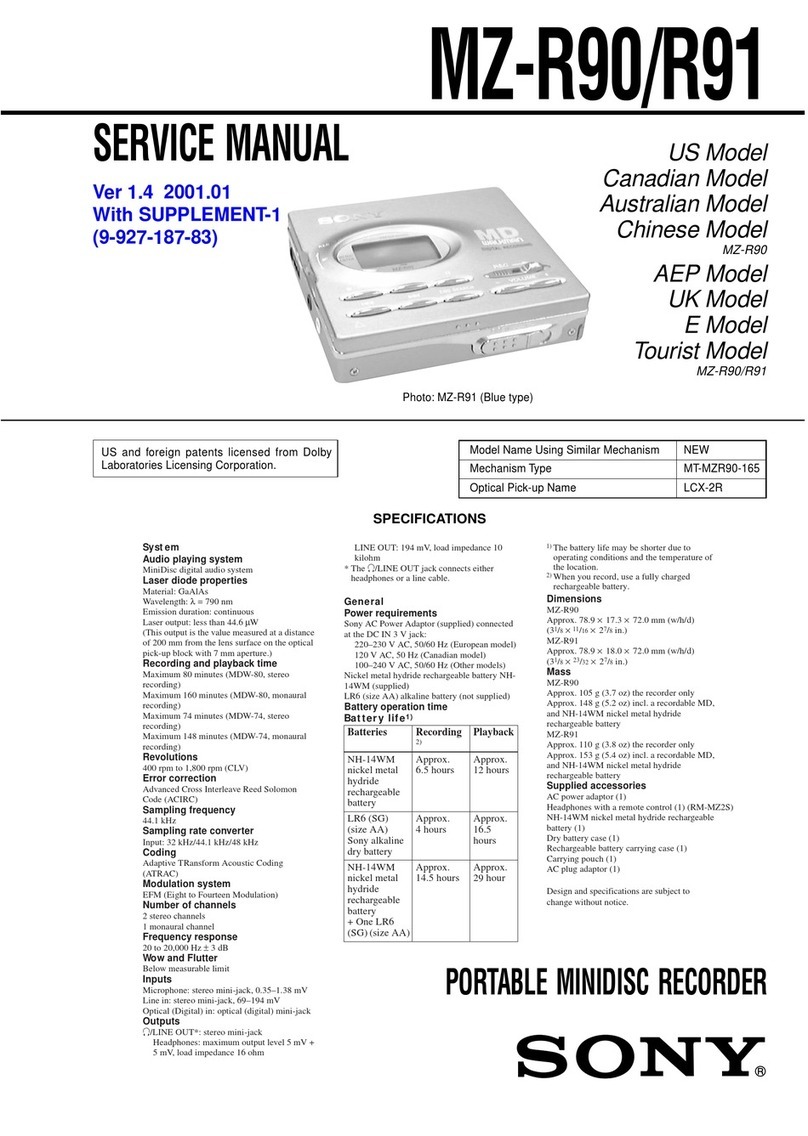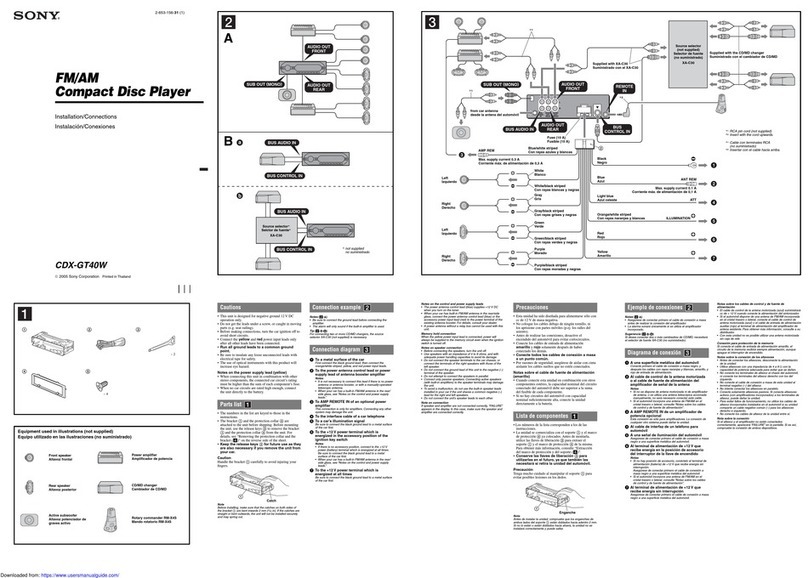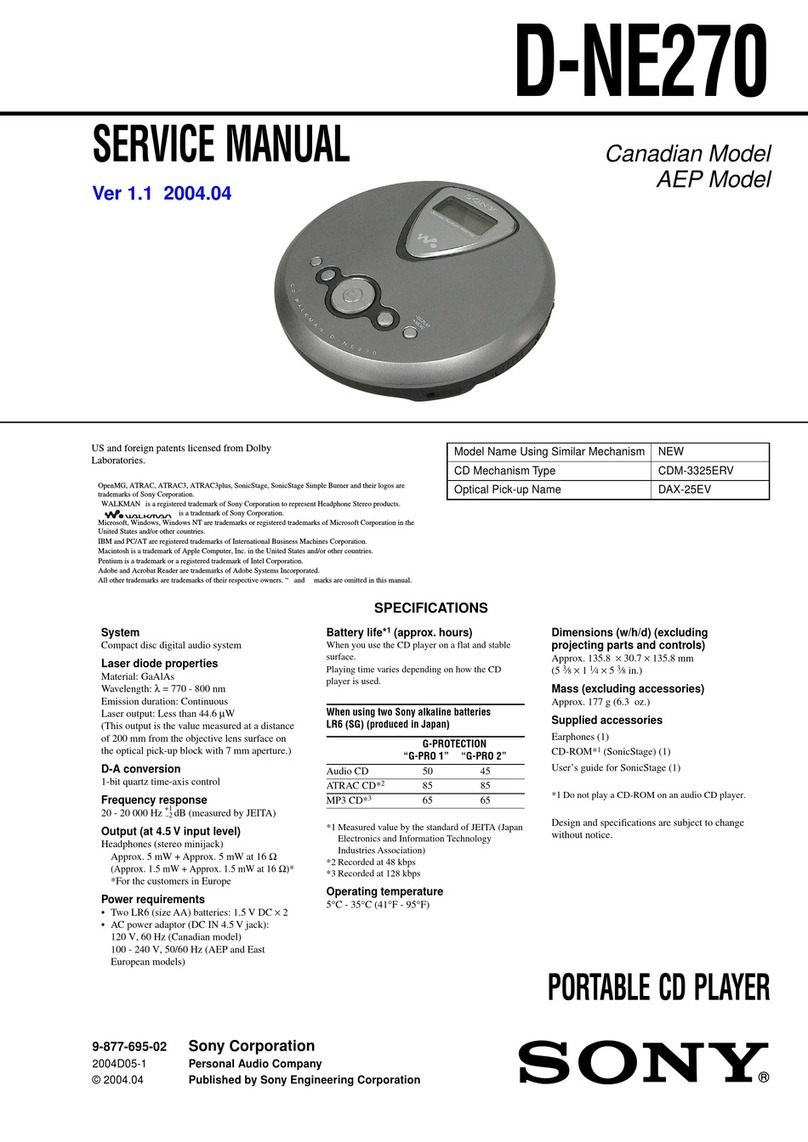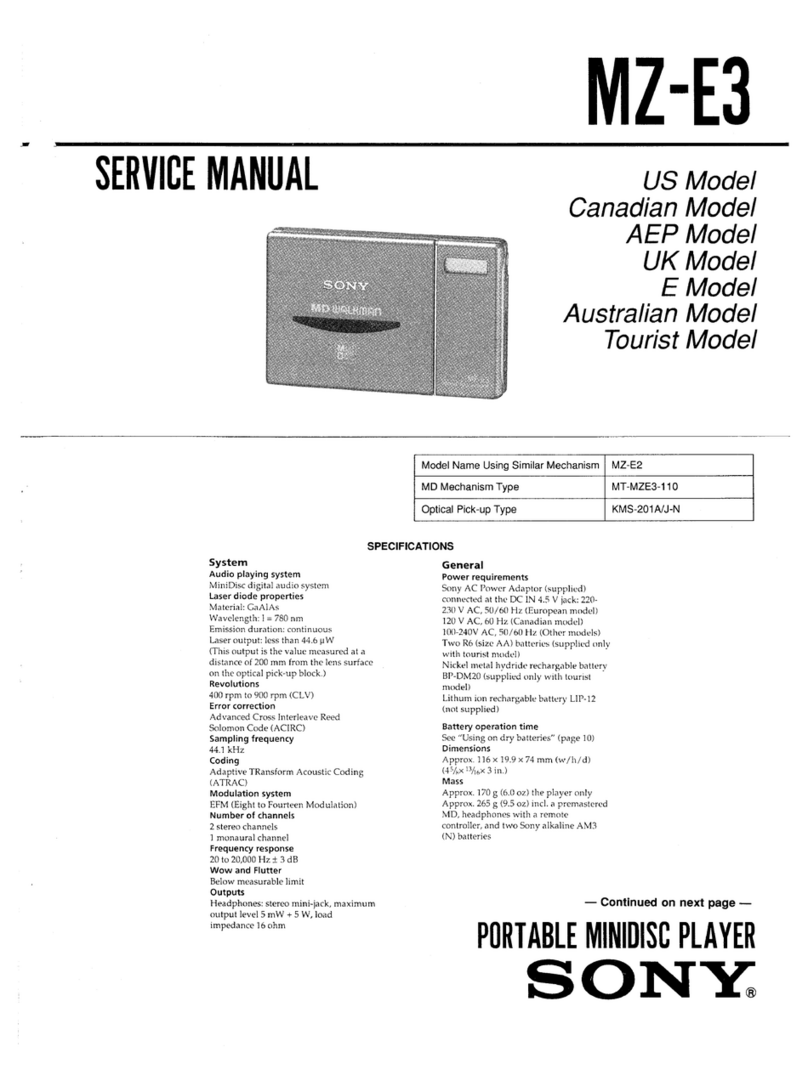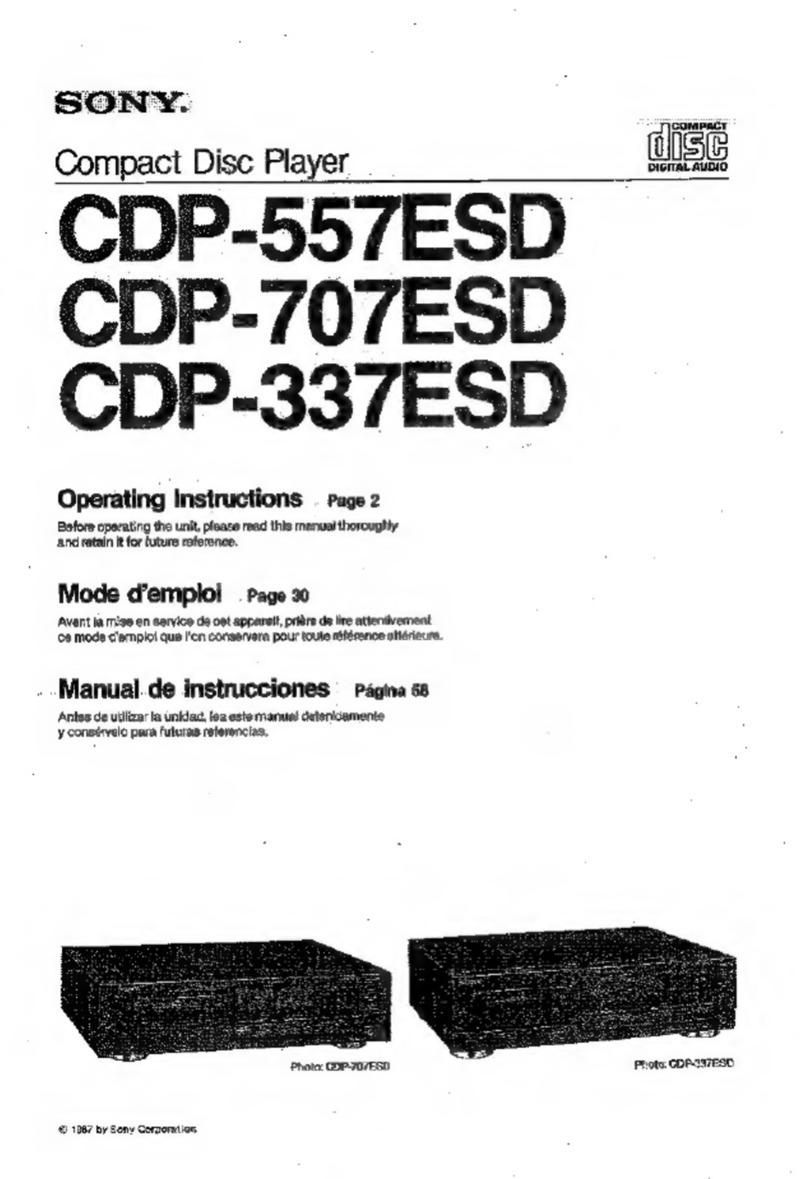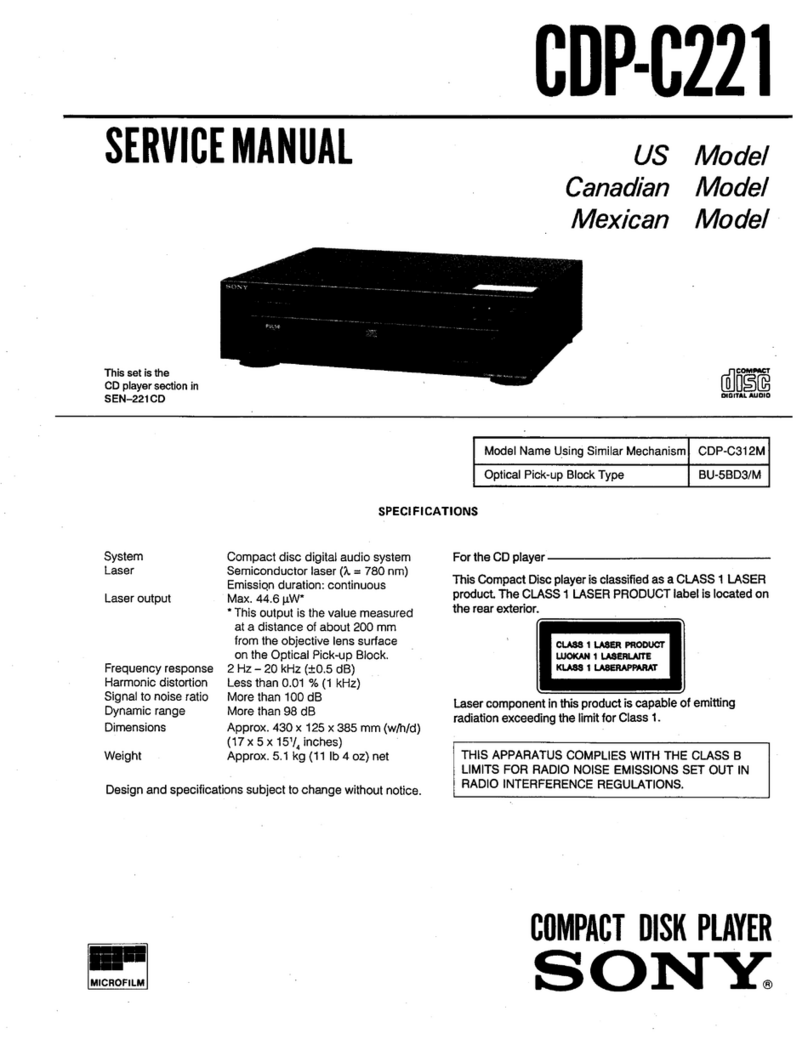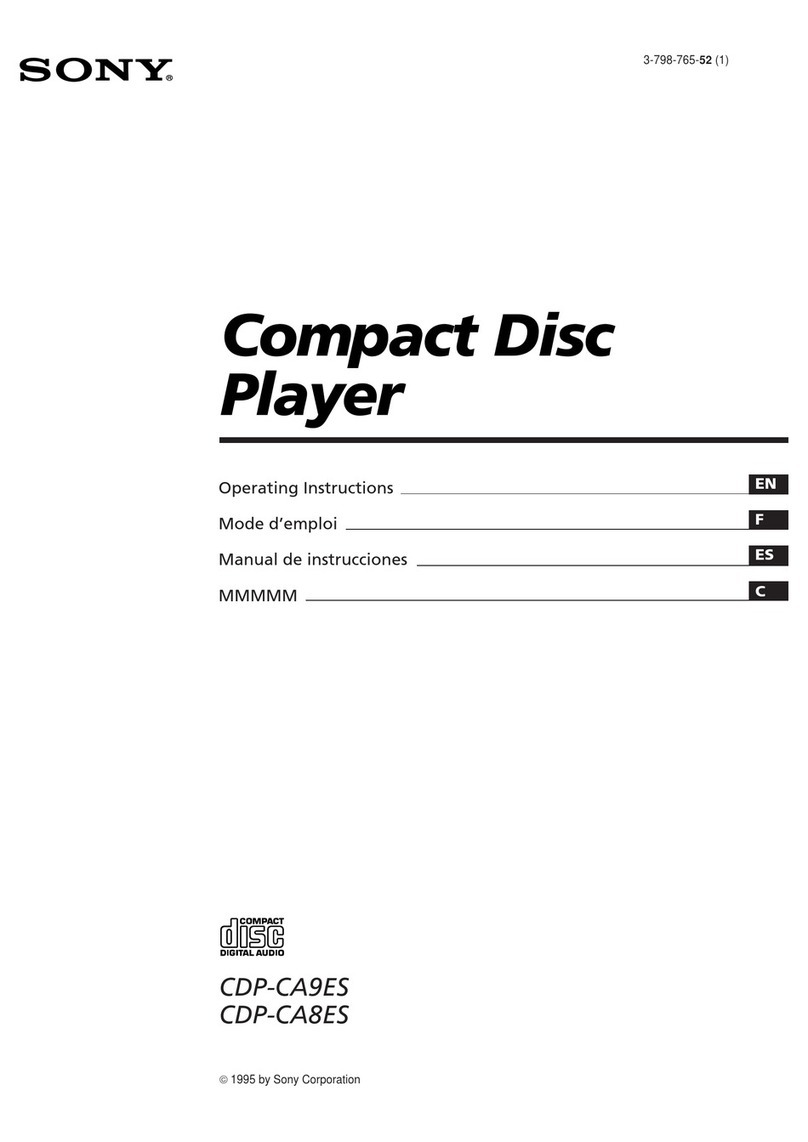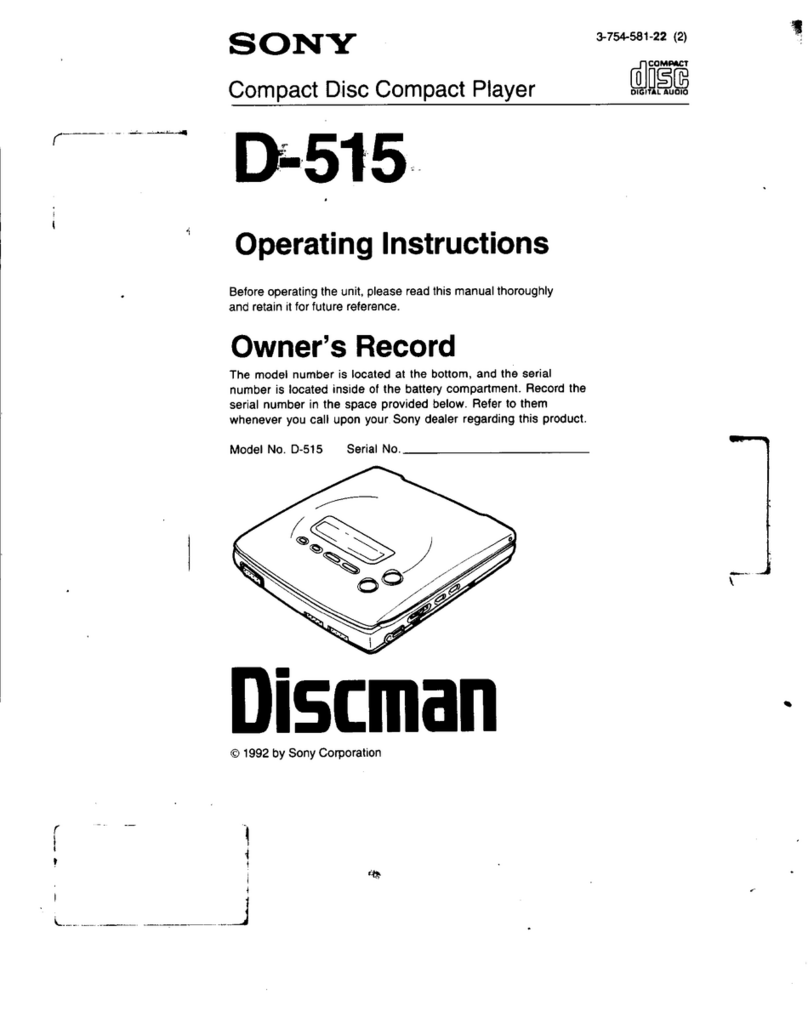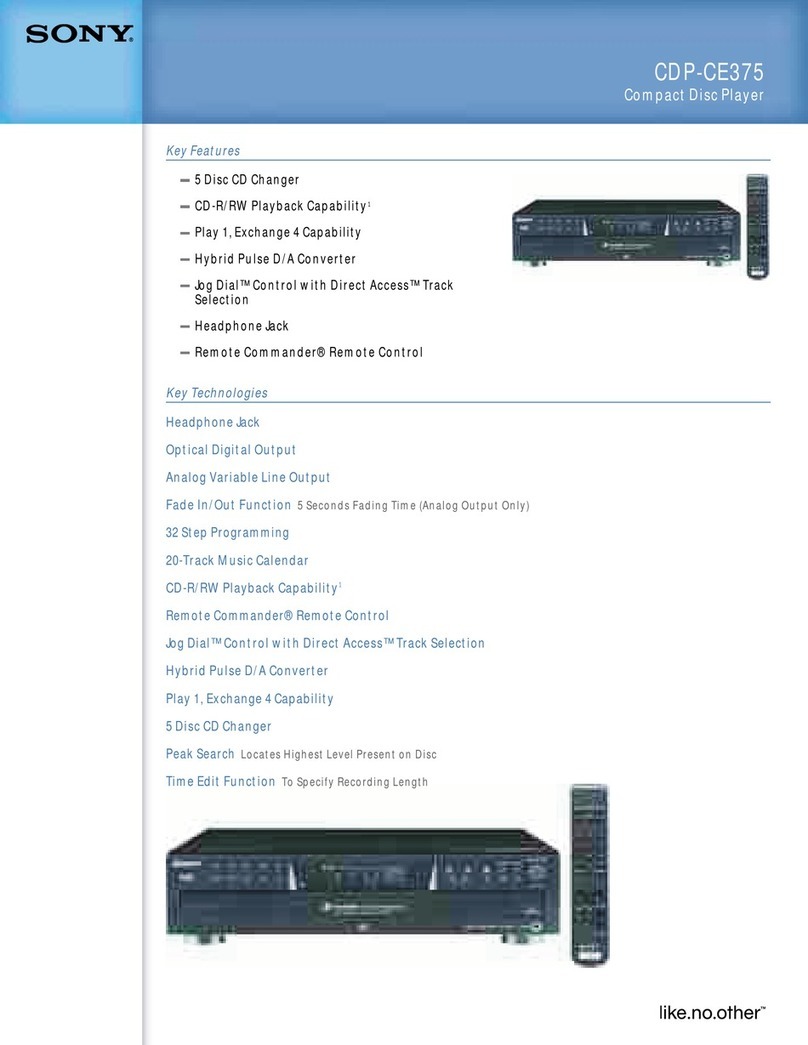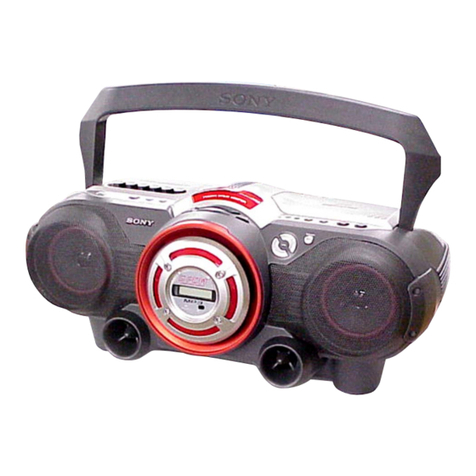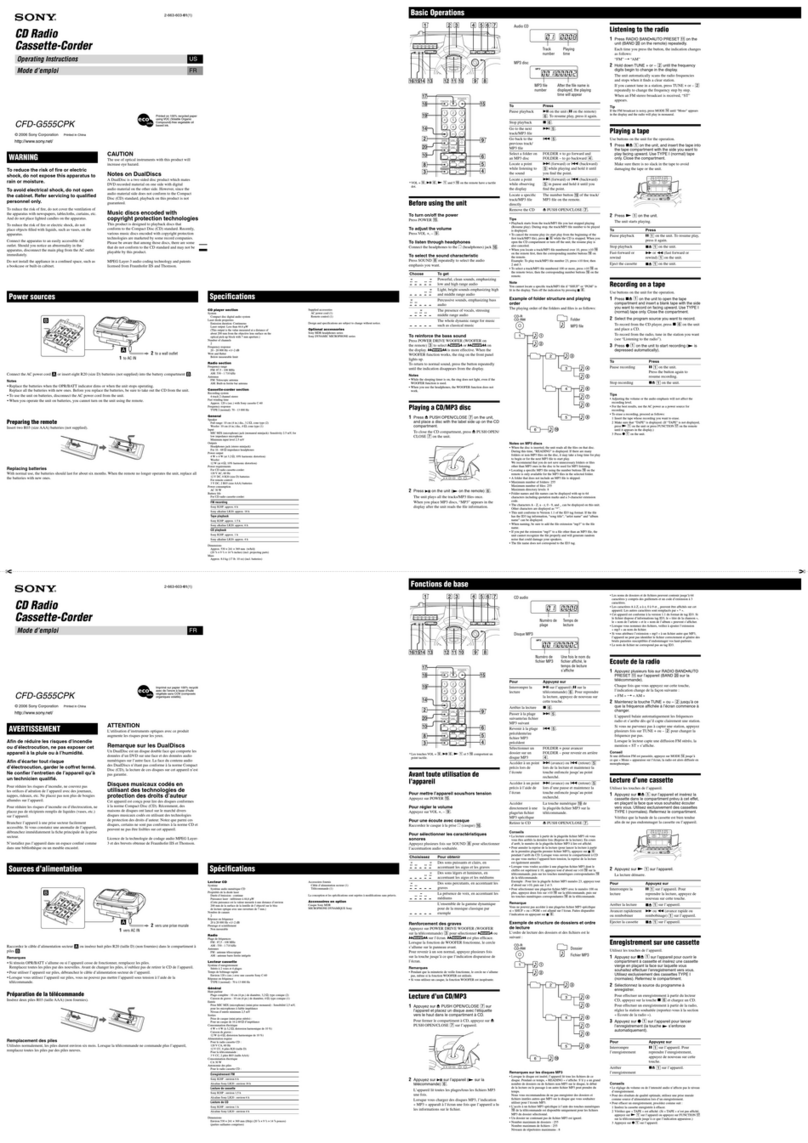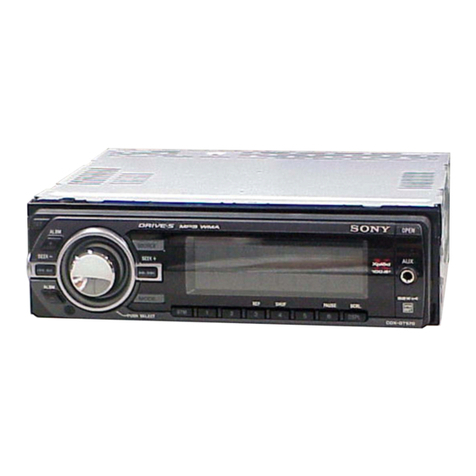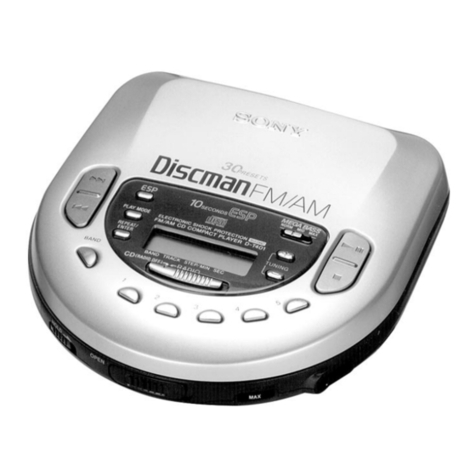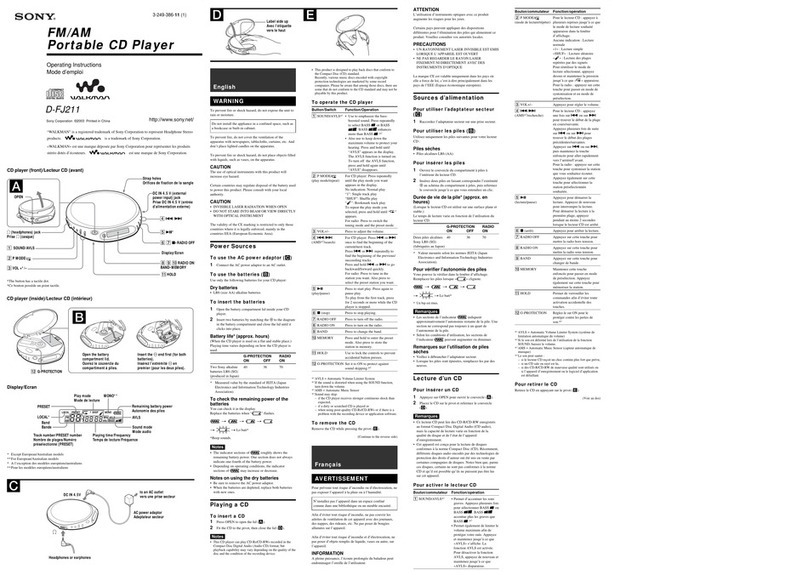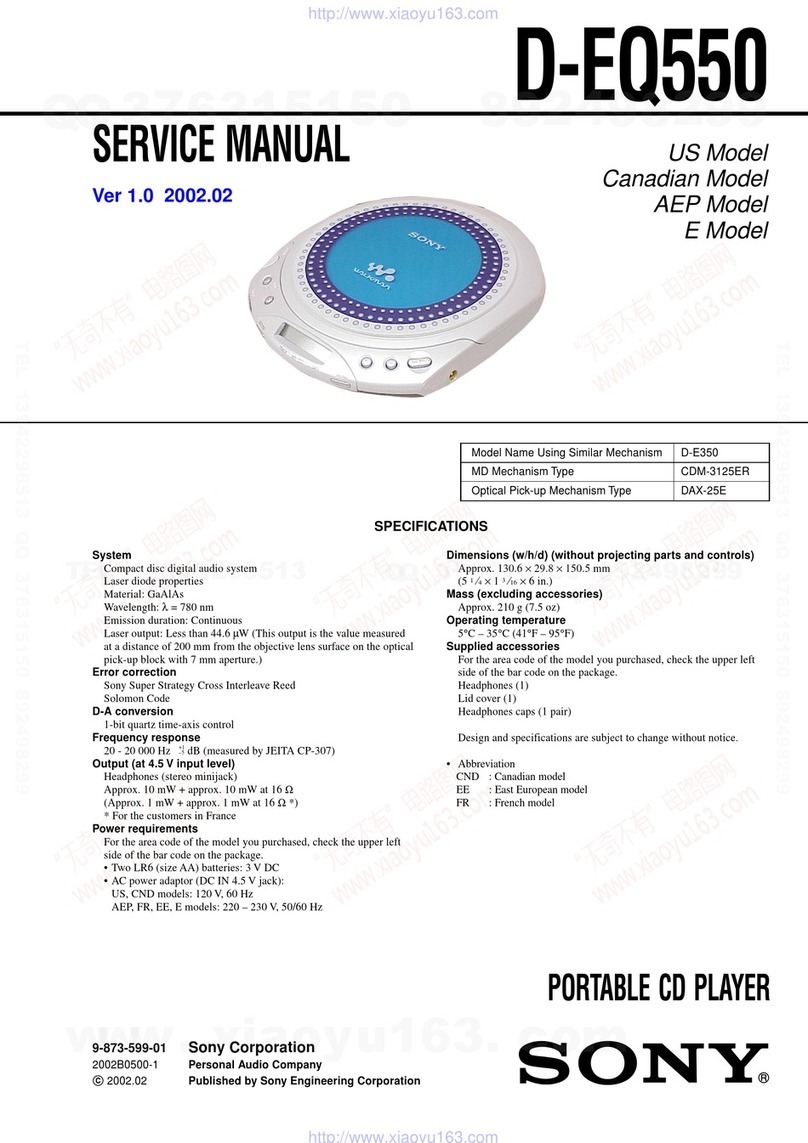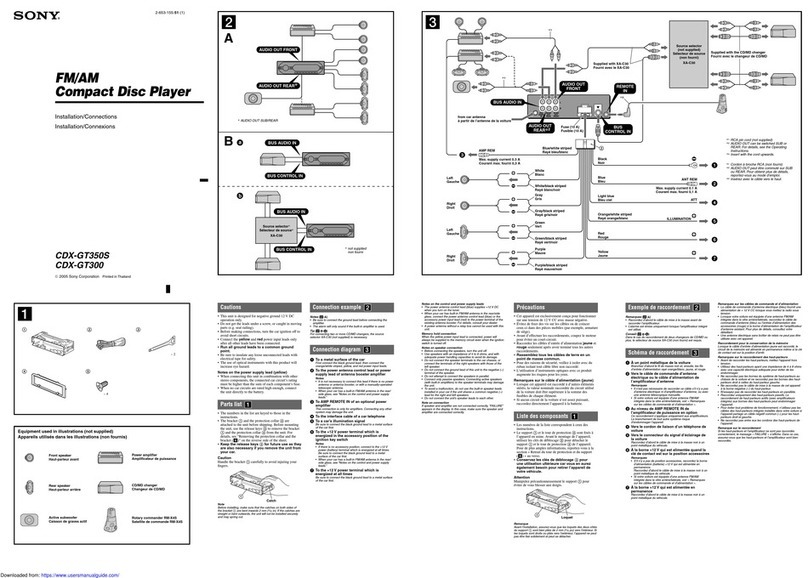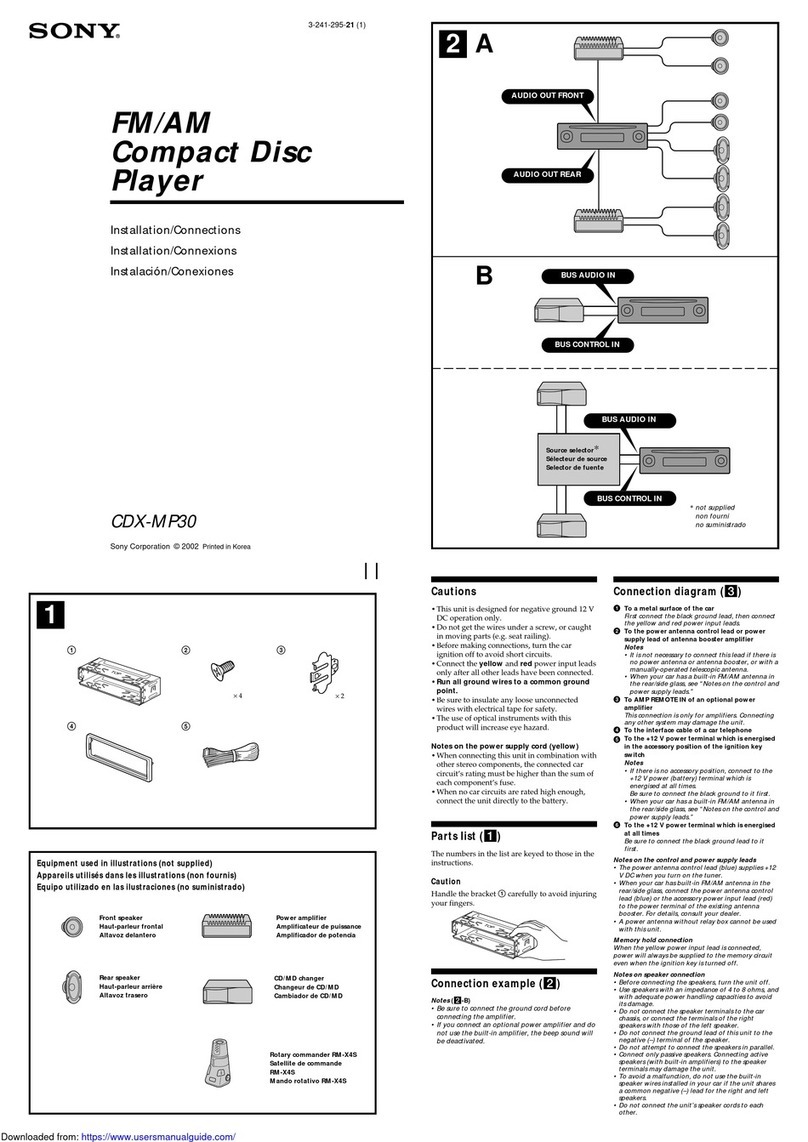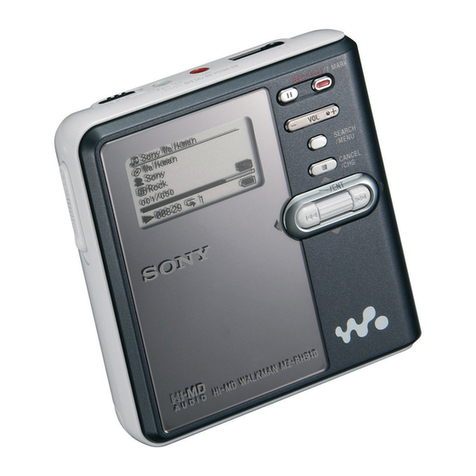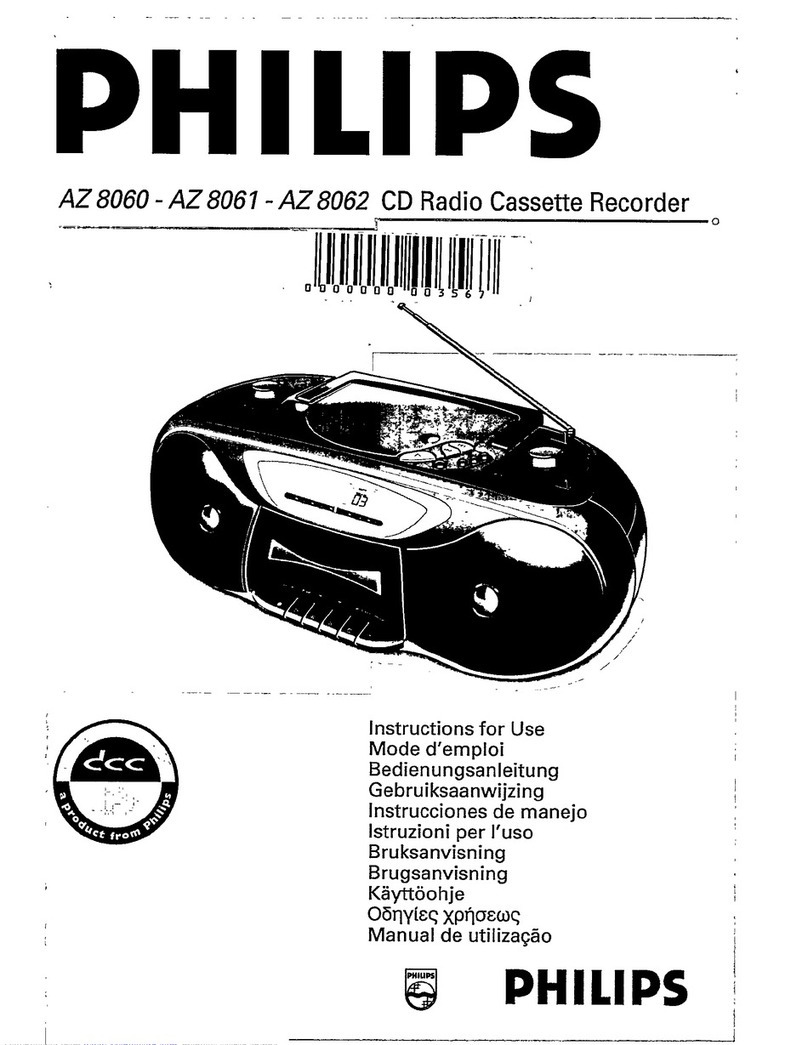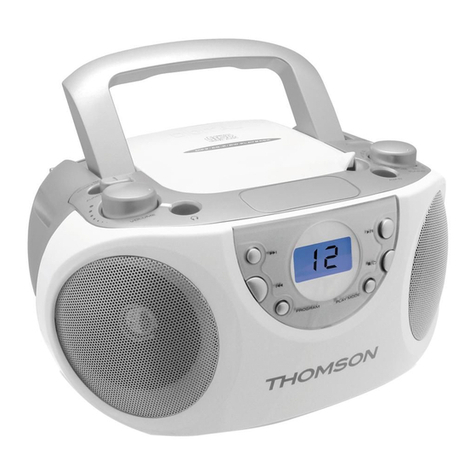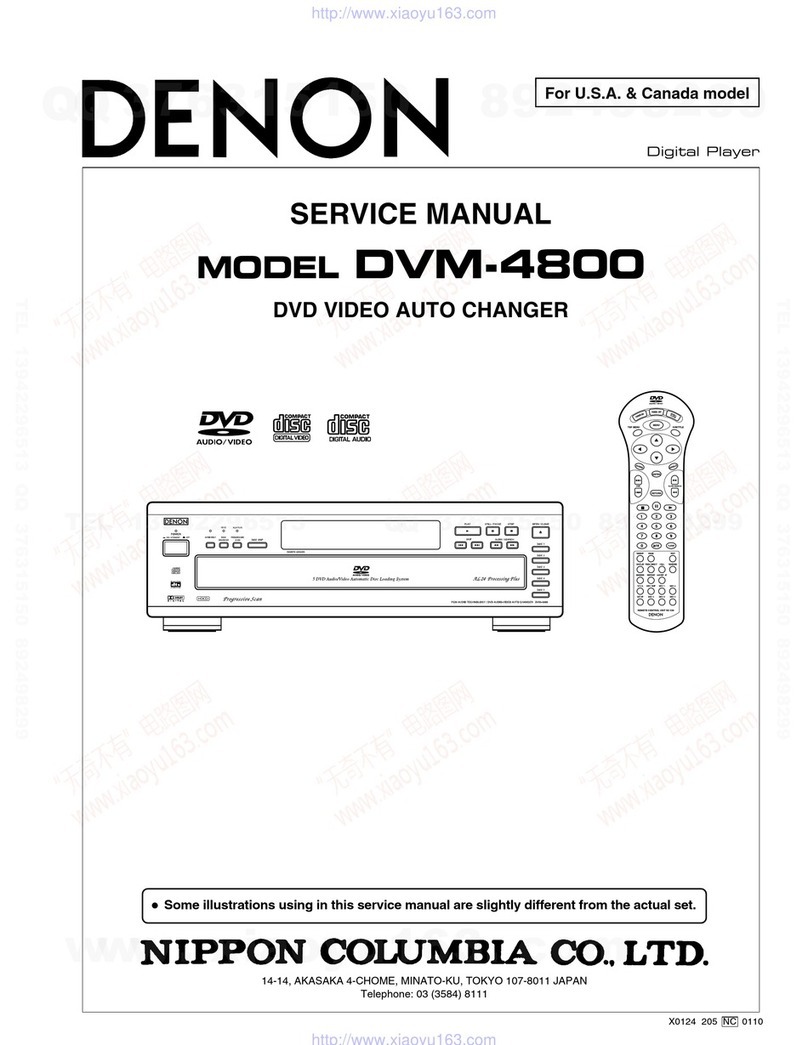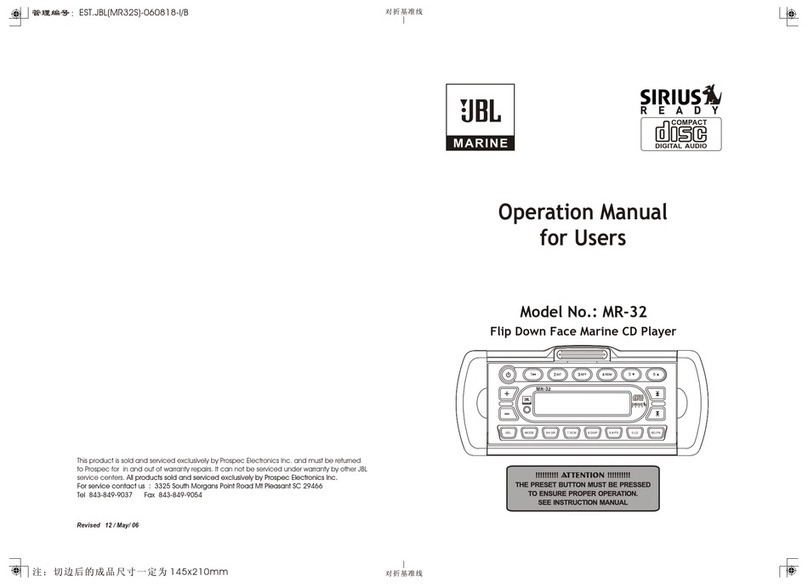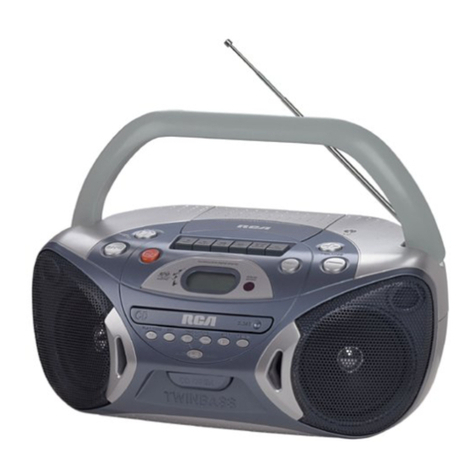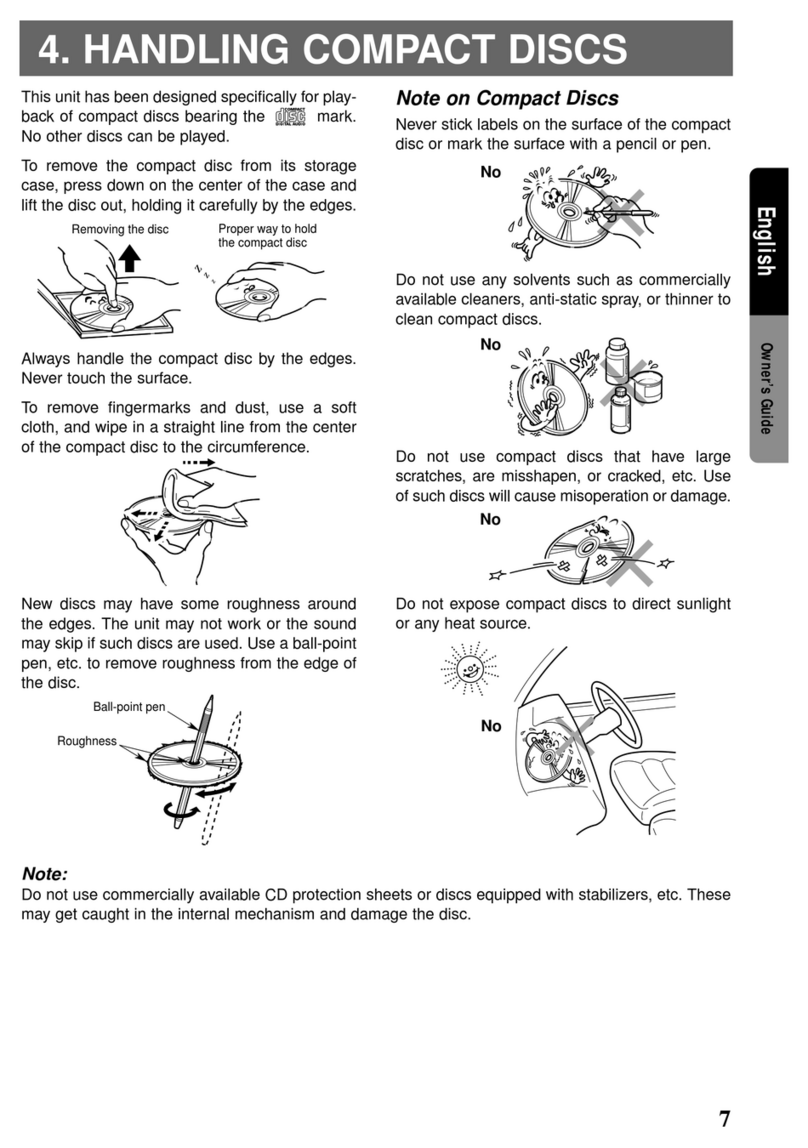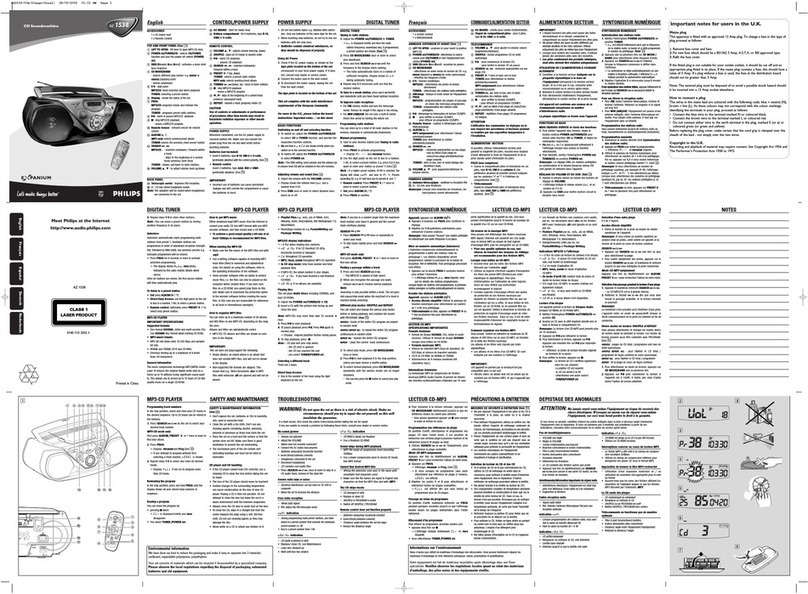
CDX-GT35UW
3
1. SERVICE NOTE ...................................................... 4
2. GENERAL
Connections .................................................................... 5
3. DISASSEMBLY
3-1. Sub Panel Assy ............................................................... 7
3-2. CD Mechanism Block..................................................... 7
3-3. Main Board ..................................................................... 8
3-4. Servo Board .................................................................... 8
3-5. Chassis (T) Sub Assy ...................................................... 9
3-6. Roller Arm Assy.............................................................. 9
3-7. Chassis (OP) Assy........................................................... 10
3-8. Chucking Arm Sub Assy................................................. 10
3-9. Sled Motor Assy.............................................................. 11
3-10. Optical Pick-up Section .................................................. 12
3-11. Optical Pick-up ............................................................... 12
4. DIAGRAMS
4-1. Block Diagram –Main Section– ..................................... 13
4-2. Block Diagram –Display Section– ................................. 14
4-3. Printed Wiring Board –Main Section–............................ 16
4-4. Schematic Diagram –Main Section (1/3)–...................... 17
4-5. Schematic Diagram –Main Section (2/3)–...................... 18
4-6. Schematic Diagram –Main Section (3/3)–...................... 19
4-7. Printed Wiring Boards –Key Section–............................ 20
4-8. Schematic Diagram –Key Section– ................................ 21
5. EXPLODED VIEWS
5-1. Main Section ................................................................... 26
5-2. Front Panel Section......................................................... 27
5-3. CD Mechanism Section (MG-101Y-188//Q).................. 28
6. ELECTRICAL PARTS LIST.................................. 29
TABLE OF CONTENTS
UNLEADED SOLDER
Boards requiring use of unleaded solder are printed with the lead-
free mark (LF) indicating the solder contains no lead.
(Caution: Some printed circuit boards may not come printed with
the lead free mark due to their particular size)
: LEAD FREE MARK
Unleaded solder has the following characteristics.
• Unleaded solder melts at a temperature about 40 °C higher
than ordinary solder.
Ordinary soldering irons can be used but the iron tip has to be
applied to the solder joint for a slightly longer time.
Soldering irons using a temperature regulator should be set to
about 350 °C.
Caution: The printed pattern (copper foil) may peel away if
the heated tip is applied for too long, so be careful!
• Strong viscosity
Unleaded solder is more viscous (sticky, less prone to flow)
than ordinary solder so use caution not to let solder bridges
occur such as on IC pins, etc.
• Usable with ordinary solder
It is best to use only unleaded solder but unleaded solder may
also be added to ordinary solder.
